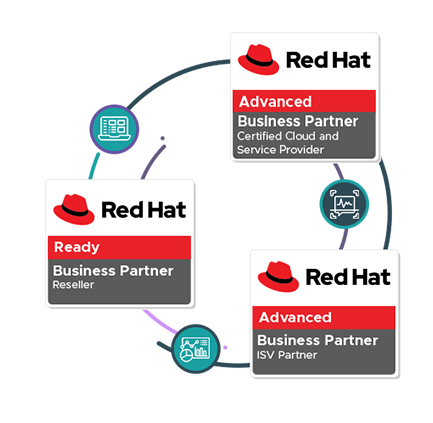Skipping a Red Hat consultation might seem like a cost-saving decision—until it isn’t. For many IT teams, what starts as “we’ll handle it ourselves” often spirals into days of downtime, mounting technical debt, and expensive rework. The irony? The very consultation they skipped could have prevented the disaster in the first place.
In today’s hybrid, containerized, and automation-driven world, small misconfigurations can create large-scale problems. And Red Hat’s ecosystem—powerful as it is—demands more than just installation. It demands expertise, alignment, and foresight.
The Setup: When Teams Go It Alone
Picture this: A fast-growing enterprise adopts Red Hat OpenShift to modernize their applications. The team, confident in their Linux experience, sets up clusters, deploys containers, and configures networking—without consulting certified Red Hat experts.
At first, things run smoothly. The team celebrates its “DIY success.” But weeks later, cracks appear:
- Nodes start failing under unpredictable workloads.
- Security patches conflict with production workloads.
- CI/CD pipelines slow down or stop responding.
- Automation scripts stop functioning after cluster updates.
What was meant to be a cost-saving project quickly turns into an expensive recovery mission.
The Hidden Complexity of Red Hat Ecosystems
Red Hat’s ecosystem—spanning OpenShift, Ansible Automation, OpenStack, and Enterprise Linux—is a suite of interconnected technologies. Each layer enhances the other, but also introduces dependencies that need expert configuration.
Without Red Hat consultation, organizations often fall into common traps:
- Improper resource allocation leading to underperforming nodes.
- Outdated automation workflows that increase manual effort.
- Unoptimized hybrid cloud configurations that raise costs.
- Limited visibility into cluster health and performance analytics.
A Red Hat consultation isn’t just technical—it’s architectural. It ensures every layer is aligned with your performance goals, compliance needs, and growth trajectory.
The Domino Effect of Skipping Consultation
When systems are misconfigured or under-optimized, problems don’t stay contained—they cascade. And with Red Hat technologies being the backbone of mission-critical infrastructure, even minor oversights can cause major fallout.
Here’s what that often looks like:
- Developers spend hours troubleshooting deployment errors instead of writing code.
- Applications crash during traffic surges due to improper container orchestration.
- Security teams scramble to fix vulnerabilities that should have been addressed in the design phase.
- Downtime costs escalate into thousands of dollars per minute.
All of which could have been prevented with a few hours of strategic consultation.
Why Consultation Is Cheaper Than Repair
Let’s break down the math. A typical Red Hat consultation engagement costs a fraction of what unplanned downtime or system failure will cost your business.
According to Forrester, enterprises that invest in structured Red Hat consulting experience:
- 35% faster deployment cycles through automation best practices.
- 45% reduction in unplanned downtime by optimizing infrastructure reliability.
- 20% lower operational costs due to simplified management and monitoring.
Those are savings you can measure—not just in dollars, but in peace of mind.
Real-World Example: The Cost of Skipping Expertise
A financial services provider decided to deploy their Red Hat OpenShift environment internally to “save time.” Within months, they faced critical service outages caused by misconfigured network policies. Their development pipeline slowed to a crawl, and internal apps failed under customer load.
When Red Hat-certified consultants were finally brought in, the damage control process required a full rebuild—costing more than triple what the initial consultation would have.
Lesson learned: what looks like speed often hides fragility.
The True Role of Red Hat Consultation
A consultation isn’t about hand-holding—it’s about acceleration. Certified Red Hat partners like hSenid Mobile help organizations leverage the full Red Hat ecosystem efficiently.
They bring:
- Hands-on expertise in hybrid and multi-cloud setups.
- Automation workflows that reduce manual intervention.
- Best practices for governance, compliance, and scalability.
- Guided enablement to train internal teams for future independence.
It’s a strategic partnership designed to prevent firefighting and enable consistent growth.
How to Know You’re Overdue for Consultation
If any of these sound familiar, you’re already late to the consultation table:
- Your team spends more time troubleshooting than innovating.
- Cloud expenses keep rising with no clear visibility.
- Deployments require manual approvals that slow down delivery.
- Security and compliance audits expose recurring gaps.
A Red Hat consultation resets the system—bringing structure, scalability, and control back into your hands.
The Bottom Line: Skip the Guesswork, Not the Consultation
In IT, guessing is expensive. Red Hat environments are powerful, but without the right expertise, that power turns chaotic fast.
A Red Hat consultation gives your team a roadmap—not just to deploy, but to optimize, scale, and sustain.
Because in the end, the question isn’t “Can we afford consultation?” It’s “Can we afford not to?”
Discover how hSenid Mobile’s Red Hat Consultation Services can secure, streamline, and future-proof your infrastructure. Start the conversation today.








